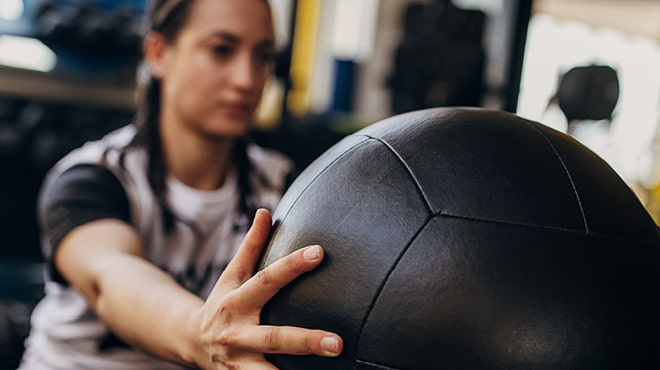When it comes to sports, sometimes too much of a great thing can be, well, too much — too much running, swinging, throwing, jumping. These repetitive motions can lead to overuse injuries, which may prevent you from participating for the rest of the season and limit rehabilitation. And they could even have long-term effects.
If you or your child participate in organized sports or focus on a sport individually, you may be at risk for an overuse injury.
Overuse injuries tend to affect muscles and joints and can be caused by:
- Training errors
Training errors can happen when you take on too much physical activity too quickly. Going too fast, exercising for too long or simply doing too much of one type of activity can strain your muscles and lead to an injury. - Technique errors
Improper technique also can take its toll. For example, if you use poor form as you perform a set of strength-training exercises, swing a golf club or throw a baseball, you may overload certain muscles.
Examples of overuse injuries for specific sports include:
- Tennis, swimming, baseball, volleyball
Patellar tendonitis, plantar fasciitis, stress fractures, elbow and shoulder conditions, rotator cuff injuries, and tendonitis. - Basketball
Achilles tendonitis, and foot and ankle injuries. - Running
Foot and ankle injuries, plantar fasciitis, and stress fractures.
Ideally, at the end of the season, athletes of any age or ability should take a break to give their bodies a chance to rest and heal to prevent overuse injuries. It’s also a good time to check with your health care professional to ensure that any aches, pains or reduced range of motion can be addressed.
If you’re the parent of a student-athlete, pay attention to signs from your child of a potential overuse injury, including:
- Complaints of pain
- Drop in performance
- Reluctance to play
If you notice these signs, make an appointment with your child’s health care professional.
3 ways to avoid overuse injury
Most overuse injuries are avoidable and can be prevented by:
- Using proper form and gear
Whether you’re new to an activity or have been doing it for a long time, consider taking lessons. Using the correct technique is crucial to preventing overuse injuries. Also, make sure you wear proper shoes for the activity. Think about replacing your shoes for every 250 to 500 miles you walk or run — or at least twice a year if you exercise regularly. - Pacing yourself
Compressing your physical activity for the week into just a couple of days can lead to an overuse injury. Instead, aim for at least 30 minutes of moderate physical activity daily. If you don’t have time for a full 30 minutes, you can break it down into smaller blocks throughout the day. Take time to warm up before physical activity and cool down afterward. - Gradually increasing your activity level
If you’re changing the intensity or duration of a physical activity, do it gradually. For example, during strength training, increase the weight by no more than 10% a week until you reach your new goal.
Shake up your training routine
Since overuse injuries typically are due to repetitive motions, it’s important to shake up your training routine during your sport’s offseason. An offseason training routine should focus on strength and conditioning to prevent injuries and enhance performance. So it may include aspects of speed, strength, agility and mechanics, depending on the sport.
Offseason training may be available for student-athletes through their school or private companies.
Consider incorporating cross-training into your offseason routine. Instead of focusing on one type of exercise, try a completely different activity.
Elements of cross-training include:
- Building in a variety of low-impact activities, such as walking, biking, swimming, cross-country skiing, and water jogging or water fitness.
- Seeking out stationary bikes and any type of glider-style machine in the gym, while steering clear of stair machines that are hard on knee and hip joints.
- Including strength training for the major muscle groups in your arms, legs and core at least twice a week.
These activities can help prevent overuse by allowing your body to use different muscle groups and not overload any one particular group. And because they’re low-impact, they’re more friendly to your joints.
Before the new season for your sport starts, check back with your health care professional to be sure your body’s on track for achieving your fitness and performance goals.
T. Andrew Israel, M.D., practices orthopedic surgery and sports medicine in Eau Claire, Wisconsin.





